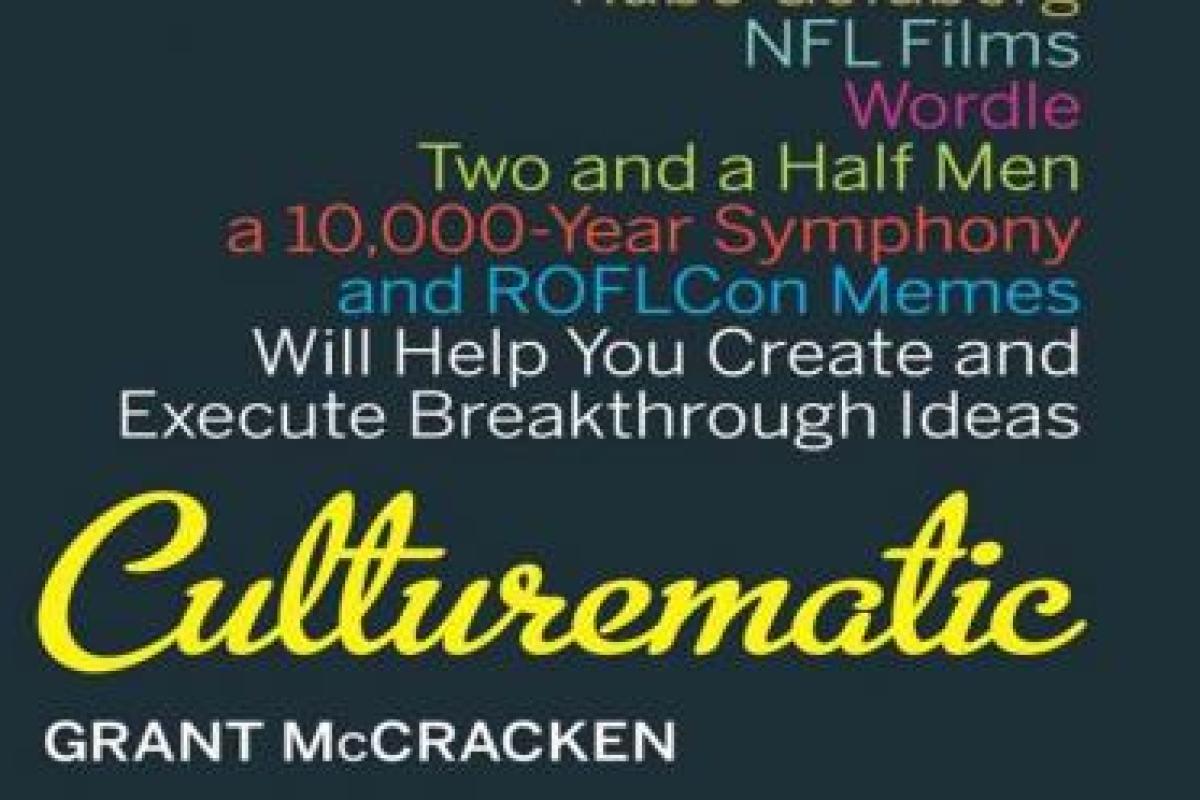Grant McCracken is not as well known in the UK as he is in the US – or, indeed, as well known as he deserves to be. A recent appearance at a Creative Social event in London demonstrated to fans old and new what a witty and incisive reader of culture he is.
Few have worked so hard to bring an anthropological perspective into marketing and advertising conversations and practice as he has. Fewer still have consistently provided us with the ideas (lenses?) through which to understand the culture in which we and our businesses swim. Fewer still have given us the tools to make practical use of these concepts.
His last book, Chief Culture Officer, argued that understanding culture and how it changes is an essential skill to have at the top of every corporation. One of the many useful take-aways here is what Grant calls the Big Wall of Culture – a practical tool for mapping changes in culture. It turns cultural anecdotes and observations from what a business mindset might dismiss as ‘soft’ and ‘vague’ points into proper datasets that can reveal the big stories.
Culturematic goes further
In it, McCracken argues that it’s not just listening better to culture that matters; it’s making small cultural experiments – ‘probes’ into possible futures to see what we might need to get good at. The ‘labs’ concept – as seen in today’s dominant businesses, such as Google, and among adland’s finest (Ogilvy and BBH) – is one example. Typical of this kind of ‘probe’ is its lack of specific brief – ‘go find something interesting that will reveal some of the future’ – and its playfulness.
The products of this kind of experimental ‘probe’ find us reaching for more and more communications content – events, experiences and ‘stuff’ (as my colleague John Willshire calls it). Among many useful examples McCracken cites the much-awarded US Fiesta campaign, which sent 100 new drivers out on missions (such as drive until you run out of petrol) and recorded what happened. Again, a seemingly undirected and loose brief with compelling results.
Intellectually, Culturematic works because it explores the space between two crucial and serious challenges: the future we face is far less certain and harder to anticipate than ever before; and innovation is much easier said than done. What McCracken calls culturematics help us to explore alternatives to the future and prepare ourselves and our organisations for different scenarios. They help innovation to escape the centrifugal force of the corporation and the ideas that blind it to different futures and disallow the new and heretical. It also seems – as many of the people mentioned in the book illustrate – a lot more fun to make culturematics than traditional innovation ideas.
Culturematic works because Grant is a great storyteller – the book is full of examples of what he means and while some of the stories are familiar to UK marketers, most are fresh and interesting. His simple and enthusiastic prose carries us along to the practical applications without losing focus on the big points.
This review was taken from the June issue of Market Leader. Browse the archive here.
